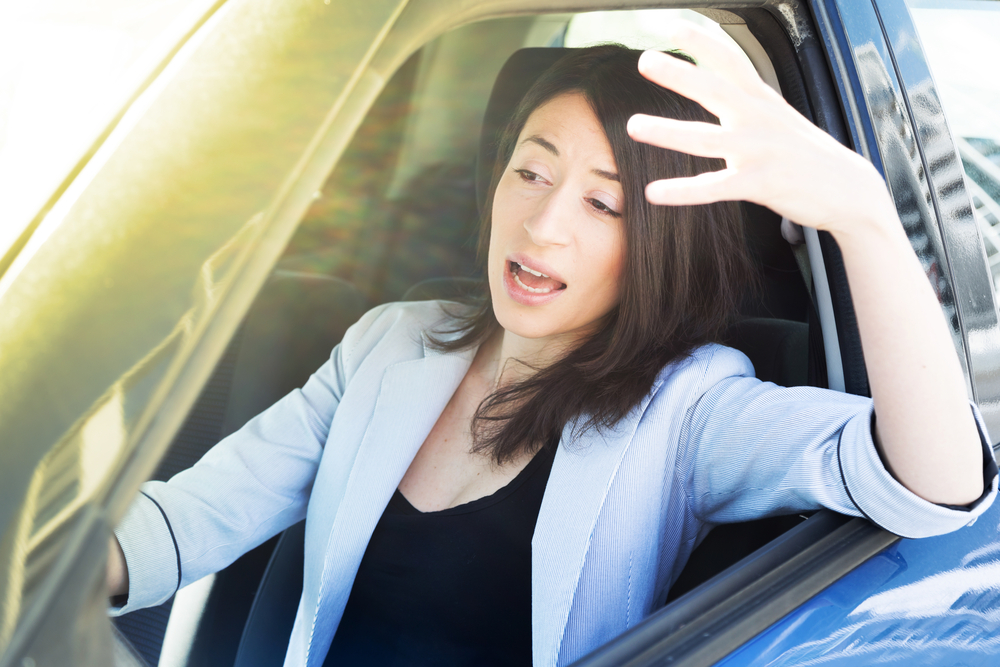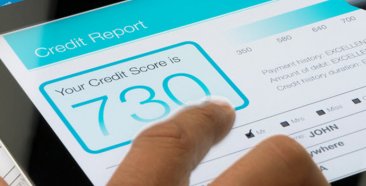
What Dangerous Driving Habits Are and How to Address Them
Most of us have a high opinion of our driving and may not be willing to admit we occasionally engage in dangerous driving habits or bad driving. But statistics show that the more often we partake in these behaviors, the greater our chance of having a car accident and paying more for car insurance.
Even worse, you may be guilty of several dangerous driving habits and not realize it. Once you’ve had them long enough, they become part of your everyday routine behind the wheel. Good driving skills are the result of constant attention and care.
Automobile accidents are caused by any number of factors, including careless and reckless behavior, driving drunk or under the influence of drugs, as well as having a total disregard for traffic rules and posted signs. Certain groups of drivers, such as teens, are especially notorious for poor driving behavior. Some of these habits – if they become “habitual” – can result in jail time.
Below are some of the most common dangerous driving habits. We will also look at how to reduce dangerous driving habits. There are specific measures you can take for each one, but overall, breaking bad habits have these actions in common:
- Have an understanding of when your bad habit is most likely to show up
- Have a clear view of the possible negative consequences your bad habits bring
- Have a list of the positive consequences that will occur when you change or stop your bad habit
- Have a plan for how you will address and change your bad habit
- Reward yourself when you accomplish your goal
Once you can identify what is likely to cause your bad habit and avoid that or find healthier ways to cope with that trigger, you’ll be well on your way to changing bad habit behaviors.
Now let’s look at specific bad driving habits.
Speeding is the Number One Cause of Fatal Accidents
Some people feel speed limits are for the other guy. No matter where they go – they speed. Granted, most of us tend to stretch the speed limit somewhat, but those who insist on always surpassing the posted speed limits by 15 or more mph not only put themselves in dangerous situations, but also other drivers.
In 2020, more than 11,000 people were killed in car accidents attributed to speeding. Many of these were teen drivers. Speeding leads to loss of vehicle control, less effective airbag protection, increased stopping distance, fatal crashes, inability to maintain the roadway during inclement weather and more.
People tend to speed for a variety of reasons. It may just be that under the protection of anonymity, drivers feel they can behave badly without societal repercussions. Sometimes it is literally because we are running late (although speeding doesn’t typically get us there any faster). And sometimes it’s just a reaction to traffic congestion. Whatever the reason, it’s at the top of the list of dangerous driving habits.
How to Break the Speeding Habit
- Give yourself plenty of time to reach your destination so you don’t feel rushed and cannot use the excuse of being late as a justification for speeding.
- If traffic congestion brings on your tendency to speed, try a different route. It might be longer, but if it has less congestion, it may be worth it. Or you can try leaving earlier or later so you aren’t in rush hour traffic. In the mornings, even 30 minutes can have a large effect. Maybe your boss will let you leave 30 minutes early after work if you take a shorter lunch.
- Do a little research and find out exactly what you are likely to be charged for a speeding ticket in your state. If you get enough speeding tickets, you may face losing your license or having to buy SR-22 insurance (which is hugely expensive).
If you are speeding because you like the rush, take up motocross! And keep in mind that speeding burns fuel faster, as well as wearing out your tires quicker. Making sudden stops as a result of driving too fast can also wear out your brake pags.
Driving Too Slowly May be as Dangerous as Speeding
Believe it or not, driving too slowly can be almost as dangerous as speeding. Drivers who aren’t maintaining the speed limit risk causing disruptions in the smooth flow of traffic. This can lead to collisions. And you can be given a citation for driving below the minimum speed or impeding traffic. This can raise your car insurance limits. Certain drivers, such as teens, who are new to the road may feel insecure about driving faster.
If you must drive below the speed limit or slower than the traffic flow, stay in the far right lane. Driving 10 or more mph under the speed limit increases your chances of being rear ended by a vehicle traveling faster. And yes, technically, the accident would be that driver’s fault. But getting into any accident, regardless of who is at fault, is a huge inconvenience in your normal life activities. You may be injured, even seriously. You may be without a vehicle for awhile. There will be paperwork and other tedious activities. It’s just better to do your best to avoid an accident.
How to Break the Driving Too Slowly Habit
- Stay alert for speed limit signs and keep an eye on your speedometer so you know you are driving at least that fast
- Use your cruise control when driving on the highway (but not in bad weather). This can help you set and maintain a legal speed.
- If you are seriously afraid of driving the speed limit, it may be time to consider alternate forms of travel – or finding someone to drive you.
If you are a habitual slow driver, never drive in the left, or passing, lanes. There’s no better way to become the victim of road rage than to block the “fast” lane with your turtle driving.
Calling or Texting While Driving Can Be a Deadly Habit
According to the National Highway Traffic Safety Administration (NHTSA), distracted driving overall was responsible for the deaths of more than 3,000 people in fatal crashes in the United States in 2019. That includes things like eating and adjusting the radio station, but using your cell phone to call or text is one of the most dangerous driving habits. The consequences can be tragic for the driver, his or her passengers, innocent drivers, and pedestrians. Taking your eyes off the road for only a few seconds to receive a text or send one could end badly for everyone.
Most states have made it illegal send or receive text messages while driving and some don’t allow using your cell phone at all. Even with Bluetooth and hands free capabilities, you may not realize how much your attention to driving suffers with distractions.
How to Break the Distracted Driving Habit
- This is serious enough that you should silence your phone and put it someplace where you cannot see it or even reach it.
- Download your music and map your route before you start your car.
If you are a parent, it is even more vital that you never use your phone while driving. Remember, your children look to you to set a good example and for cues on what’s right and what’s wrong.

Failure to Use Your Turn Signals Sets You Up for an Accident
The Society of Automotive Engineers released stats that show failure to use turn signals causes up to 2 million crashes every year. It’s easy to see why. Other drivers need some notification if you are going to change lanes or turn right or left. Your intent will help them make important decisions about their own driving, such as to slow down if you signal you are going to turn. Or get out of your way if you decide to make a lane change while someone is in your blind spot.
Drivers who fail to signal when turning or changing lanes become a dangerous hazard on the road. If you cause an accident because of your failure to use your turn signals, you will be responsible for injuries and damages you cause to others – not to mention your own passengers. You can expect to receive a citation if you are caught not using your signals appropriately and your insurance company will raise your rates.
How to Break the Habit of Failure to Use Your Flashers
- Never allow yourself to become lazy when it comes to using your turn signals.
- Use your signals every time you change lanes, pull off the highway or make a turn.
- If you forget, remind yourself that people who don’t use their turn signals are often targeted with road rage.
Other drivers aren’t the only ones who suffer from this bad behavior. Pedestrians often are the victim of drivers who fail to signal a turn.
Never assume the guy in front of you is going straight or isn’t about to cut you off, simply because he didn’t signal.
Weaving In and Out of Traffic Sets You Up For an Accident
Regardless of whether you signal or not, weaving in and out of traffic can come with a heavy price. Zig-zagging between cars at high speed is reckless driving and puts all drivers sharing the road with you at risk.
Weaving – or improper lane changing to the authorities, is a ticketable offense in the United States. And it carries a hefty fine. The reasons people exhibit this dangerous behavior are varied. Some people believe this type of driving will get them through slow-moving traffic faster. And while it might, the end result is negligible for the amount of risk.
Weaving demands that the driver have his attention equally divided between the cars in front, the cars behind and the cars to the side. While all of these positions should be constantly monitored by all drivers, the weaver has to do it at the same time while driving at high speeds. If someone in front suddenly stops while the weaver is looking at the car to the side, well, they are likely to crash into someone’s back end. Weavers often take up the safe space one car is leaving between themselves and the car in front – this puts everyone in danger.
How to Break the Habit of Weaving
- Since weaving is often born from a frustration with traffic congestion, pick a different route that may be longer but offers more wide open spaces.
- Be sure you leave early enough to arrive at your destination on time.
- Practice not changing lanes. You might be pleasantly surprised to find your lane is actually moving as fast or faster than the other lanes.
Drivers may feel that a weaver has cut them off – behavior that leads to road rage. Additionally, your insurance rates may go up if you cause an accident by weaving.
Tailgating is Bullying and It’s Never OK
You may be a serial tailgater if you consistently find yourself driving too closely to the car in front of you. Most of us have probably experienced the frustration of getting behind someone who is driving below the speed limit. It’s tempting to let them know that you don’t have time for this nonsense by trying to scare them into speeding things up by getting as close to their bumper as you can. The root of the problem is bullying – and it’s never OK.
It’s common knowledge that if you cause a car accident by running into someone’s back end as a result of tailgating, you will be at fault. You may receive a ticket and your car insurance will probably increase. If you are the victim of tailgating, pull over if you can to let the tailgater pass. It’s never worth engaging or reacting by slowing down even more. Always remember to maintain a safe following distance.
How to Break the Tailgating Habit
- When you find yourself tailgating someone, pull over, stop and get a soft drink or a coffee and give yourself time to cool off. Aggressive driving is not OK.
- Put some distance between yourself and the slow driver.
- Think about the possible repercussions of getting a ticket or worse, getting into an accident. Can you really afford that aggravation and cost?
When people tailgate, they are angry and exhibiting aggressive driving behavior. They may perceive that the slower driver is targeting them. This is how road rage escalates. Remember that this other driver is not worth you losing your cool.
What to Do if You See Someone Driving in an Unsafe Manner
It’s an unfortunate reality that we all witness reckless driving and bad driving behavior. What should we do when someone around us is driving erratically? First and foremost, consider your own safety. Put as much space between you and the actions of other drivers as possible – even if that means exiting the road. Try to always have an escape route as you drive.
Never stop paying attention to your own driving to write down license plate numbers. If you have a passenger or friend in the car, that can be their job. If not, and you feel the situation is serious enough, pull over, call 911 and describe the car as best you can.
A driver who appears to be impaired or who is drunk driving is an immediate threat to safety and should be reported as quickly as you can stop and call 911. Never drive after you’ve been drinking. It’s always best to have a designated driver.
What to Do if Someone is Targeting You on the Road
If you find yourself the target of an aggressive driver who has taken exception to something you did while driving, there are some ways to keep you – and your passengers – safe.
- If you can alert 911 safely, for example, by having a passenger call, then do it. You should never exit your vehicle to confront someone who is experiencing road rage.
- Try not to put yourself in a situation where you are boxed in by traffic and must come to a stop, such as on city streets. If you are in that situation, stay in your car with your doors locked and stay on the line with 911.
- If the angry driver exits their vehicle to approach yours and you can do it – drive away.
- Try to remember that most people will not escalate beyond shouting and angry gestures. You are enclosed in a metal cage that it will take some serious determination on their part to enter. Other people who are witnessing this will also be calling 911.
Finding yourself the target of road rage is scary. Sometimes you haven’t even done anything wrong. But keep in mind while you are behind the wheel that some others are just looking for an excuse. Don’t give it to them.
Find Affordable Car Insurance Online Today to Keep You Safe
Should any of these bad and dangerous habits sound familiar, it may be time to make a change. The less you engage in risky behavior while behind the wheel, the safer you, your family, and other motorists will be in the long run. It can also keep your auto insurance rates from blowing up before your eyes.
Accidents can still happen, even if you are a safer driver. To be properly protected in case the worst happens, you can get great affordable car insurance through Freeway Insurance. Get a free car insurance quote online or give us a call at (800) 777-5620 to get protected and have a better peace of mind.



